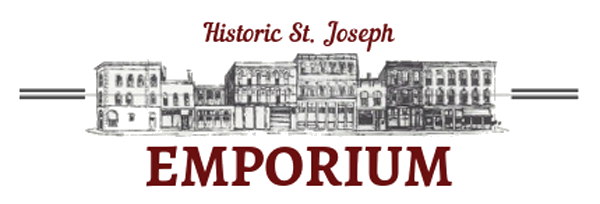Purchase Price $249,000
Zoned Commercial
Property History & Gallery
In the late 1880s, St. Joseph was a boom town and was attracting a great number of folks who had dreams of making it big. One of those ambitious souls was Charles A. Kelley who worked as a bookkeeper for a real estate insurance firm. That job gave Kelley both the income and inside knowledge to realize that multi-family rental housing on Frederick Avenue would likely yield a significant income. At that time Frederick Ave. was the “major drag into town” and Kelley had his rowhouses at 1208-1212 Frederick oriented along the diagonally running street so as to show best to travelers coming from out of town.
Kelley was the type of man that was pretty common in St. Joe at the time, but he had a vision that was not common. He had his property built as rowhouses, an architectural form that has never been common in St. Joseph. They were built in red brick in the Queen Anne style with charming details that set them apart from other income-producing housing and from one another as well.
Like many speculators, Charles Kelley lived in one part of his investment property until he could afford to build a single-family home. He was a tenant in the Kelley Flats for 6 years until his impressive home at 510 S. 12th Street was completed in 1895.
A wide variety of people called the Kelley Flats home over the years. It was a convenient place to live as there was a street car line running right down Frederick that could take a person to a job anywhere in the city. One of the earliest tenants was William B. Craig and his wife Caroline and their six children. William had served in the Civil War and came to St. Joseph after the close of hostilities. He made a good living working in the dry goods industry – enough to be able to afford a live-in servant for his large family. The 1900 census lists Ada Smith, a recent immigrant from Norway, as living with the Craig family.
In about 1911, Francis H. Moyer took over the property and ran it as “furnished rooms,” which meant that the population density of the rowhouses went up. Francis listed his occupation as a solicitor for the India Tea Company when he registered for the draft in 1919. When he died in 1947 he was a manager for McCleary’s Clinic. He seems to have been a bit of a shifty character, in addition to relatively frequent changes of occupation he was married at least 3 times and there was some scandal associated with some of his changes of spouse.
One of the people who lived at 1212 while it was under the management of Moyers was Clara Shepherd. In 1916, while she was a tenant she made the newspapers as the manager of the cafeteria at the YMCA. By 1920 she was living in the Southside where she again made the news as the founding manager of the cafeteria at the Hammond meat packing plant.
In 1930 Mrs. Laura (Lucretia) B. Foster and her children Geraldine and Kyeth lived in 1212. Laura, who only had an 8th grade education, was a nursing assistant but her daughter Geraldine had completed 2 years of college and was a licensed nurse. The family were hard workers and by 1940 they were able to own their own home at 725 S. 11th St.
As St. Joseph’s economy took a downward turn in the 1960s-1980s, Frederick Avenue was hard hit. Urban renewal of the 1970s took out some of the city’s most historic architecture, and the rowhouses along Frederick stood alone without their neighbors and began to suffer from neglect. In recent years Frederick Avenue, along with the historic downtown and neighborhoods, has seen an improvement in its condition. That improvement is shown clearly in the restoration of the Kelley Flats. They were listed on the National Register in 1989 and thus are eligible for historic tax credits as well as for local preservation grants.

















